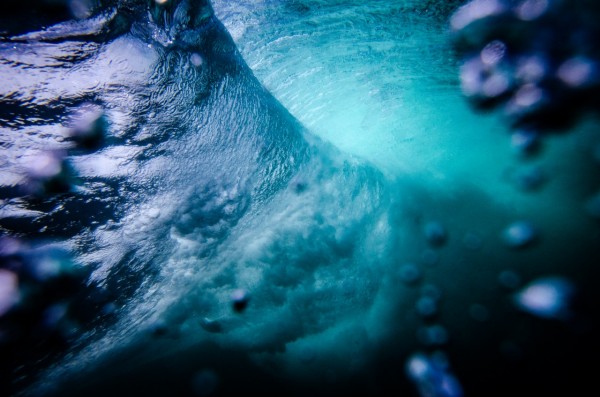'MAYBE' TECH CCSMagnesium Can Make Carbon Capture Technology Faster; Could Bury Molecules Under the Sea for Hundreds of Years
Ron Jefferson SCIENCE TIMESOct 04, 2021
The carbon capture approach is among the most promising methods to reduce the warming of water bodies on the planet, and ultimately hold off the threat of global climate change. A new study conducted by the University of Texas and ExxonMobil has found a way to develop a technology that uses carbon capture through crystalized hydrates. With the materials, experts have found that massive carbon dioxide content from the seafloor could be stored for more than hundreds of years. Moreover, adding magnesium to the system could speed up the reaction process of the crystalized hydrates up to 3,000 times faster than their standard capability.
Carbon Capture Technology vs Climate Change

(Photo : Emiliano Arano from Pexels)
The solutions to end the constant climate change on our planet have offered possibilities, but only a few were credible enough to take the burden. Among the best methods is to reduce the harmful gas content that hovers on Earth's atmospheric regions. Reducing greenhouse gases is theorized to significantly slow down the increasing risks of climate change. One of the applicable methods that experts are interested in is the carbon capture and sequestration approach. This procedure has the ability to suck up the carbon content from the skies and keep it for a very long time. Carbon capture has been tested and found to be effective, but only a small portion of CO2 content has been processed through the technique.
The University of Texas and Exxonmobil have conducted collaborative research to increase and speed up the carbon capture process. According to the study, the most effective way to quickly absorb the carbon dioxide and store it for more than centuries under the ocean floor is through synthesizing magnesium with the standard carbon-capturing model.
Magnesium-Induced Carbon Capture
Cockrell School of Engineering's Walker Department of Mechanical Engineering expert and lead author of the study Vaibhav Bahadur said in a SciTechDaily report that they view the carbon capture method as insurance for Earth's climate condition. The expert added that if carbon neutral is impossible to decrease the threat of climate change, they will take part to achieve a carbon-neutral environment. In this way, the damage inflicted is theorized to be healed.
Hydrates are the material that is expected to help experts absorb and trap CO2 underwater. Hydrates are formed whenever carbon dioxide is fused with a composition including water in an extremely high pressure but with a low temperature, respectively. The chemical reaction that goes through this method allows the water molecules to transition into another material that is capable of trapping and burying the carbon dioxide molecules.
Magnesium can speed up the carbon capture process by 3,000 times the standard reaction. Measured to be faster than the most effective carbon-capture method, the warming of the planet could be significantly lowered in just a shorter span of time. The study was published in the journal ACS Sustainable Chemistry Engineering, titled "Magnesium-Promoted Rapid Nucleation of Carbon Dioxide Hydrates."
Ron Jefferson
The carbon capture approach is among the most promising methods to reduce the warming of water bodies on the planet, and ultimately hold off the threat of global climate change. A new study conducted by the University of Texas and ExxonMobil has found a way to develop a technology that uses carbon capture through crystalized hydrates. With the materials, experts have found that massive carbon dioxide content from the seafloor could be stored for more than hundreds of years. Moreover, adding magnesium to the system could speed up the reaction process of the crystalized hydrates up to 3,000 times faster than their standard capability.
Carbon Capture Technology vs Climate Change

(Photo : Emiliano Arano from Pexels)
The solutions to end the constant climate change on our planet have offered possibilities, but only a few were credible enough to take the burden. Among the best methods is to reduce the harmful gas content that hovers on Earth's atmospheric regions. Reducing greenhouse gases is theorized to significantly slow down the increasing risks of climate change. One of the applicable methods that experts are interested in is the carbon capture and sequestration approach. This procedure has the ability to suck up the carbon content from the skies and keep it for a very long time. Carbon capture has been tested and found to be effective, but only a small portion of CO2 content has been processed through the technique.
The University of Texas and Exxonmobil have conducted collaborative research to increase and speed up the carbon capture process. According to the study, the most effective way to quickly absorb the carbon dioxide and store it for more than centuries under the ocean floor is through synthesizing magnesium with the standard carbon-capturing model.
Cockrell School of Engineering's Walker Department of Mechanical Engineering expert and lead author of the study Vaibhav Bahadur said in a SciTechDaily report that they view the carbon capture method as insurance for Earth's climate condition. The expert added that if carbon neutral is impossible to decrease the threat of climate change, they will take part to achieve a carbon-neutral environment. In this way, the damage inflicted is theorized to be healed.
Hydrates are the material that is expected to help experts absorb and trap CO2 underwater. Hydrates are formed whenever carbon dioxide is fused with a composition including water in an extremely high pressure but with a low temperature, respectively. The chemical reaction that goes through this method allows the water molecules to transition into another material that is capable of trapping and burying the carbon dioxide molecules.
Magnesium can speed up the carbon capture process by 3,000 times the standard reaction. Measured to be faster than the most effective carbon-capture method, the warming of the planet could be significantly lowered in just a shorter span of time. The study was published in the journal ACS Sustainable Chemistry Engineering, titled "Magnesium-Promoted Rapid Nucleation of Carbon Dioxide Hydrates."
Metals Supercharge Method To Bury Billions of Tons of Harmful Carbon Dioxide Under the Sea for Centuries

- Capturing and burying carbon is one of the most promising ways to blunt the pace of climate change
- University of Texas and ExxonMobil researchers found a way to speed up the formation of crystal structures called hydrates that can store billions of tons of carbon for centuries
- Adding magnesium to the reaction led to a 3,000x increase in hydrate formation wait time — from hours or even days down to a few minutes
There’s a global race to reduce the amount of harmful gases in our atmosphere to slow down the pace of climate change, and one way to do that is through carbon capture and sequestration — sucking carbon out of the air and burying it. At this point, however, we’re capturing only a fraction of the carbon needed to make any kind of dent in climate change.
Researchers from The University of Texas at Austin, in partnership with ExxonMobil, have made a new discovery that may go a long way in changing that. They have found a way to supercharge the formation of carbon dioxide-based crystal structures that could someday store billions of tons of carbon under the ocean floor for centuries, if not forever.
“I consider carbon capture as insurance for the planet,” said Vaibhav Bahadur (VB), an associate professor in the Cockrell School of Engineering’s Walker Department of Mechanical Engineering and the lead author of a new paper on the research in ACS Sustainable Chemistry & Engineering. “It’s not enough anymore to be carbon neutral, we need to be carbon negative to undo damage that has been done to the environment over the past several decades.”
These structures, known as hydrates, form when carbon dioxide is mixed with water at high pressure and low temperature. The water molecules re-orient themselves and act as cages that trap CO2 molecules.
But the process initiates very slowly – it can take hours or even days to get the reaction started. The research team found that by adding magnesium to the reaction, hydrates formed 3,000 times faster than the quickest method in use today, as rapidly as one minute. This is the fastest hydrate formation pace ever documented.
“The state-of-the-art method today is to use chemicals to promote the reaction,” Bahadur said. “It works, but it’s slower, and these chemicals are expensive and not environmentally friendly.”
The hydrates form in reactors. In practice, these reactors could be deployed to the ocean floor. Using existing carbon capture technology, CO2 would be plucked from the air and taken to the underwater reactors where the hydrates would grow. The stability of these hydrates reduces the threat of leaks present in other methods of carbon storage, such as injecting it as a gas into abandoned gas wells.
Figuring out how to reduce carbon in the atmosphere is about as big of a problem as there is in the world right now. And yet, Bahadur says, there are only a few research groups in the world looking at CO2 hydrates as a potential carbon storage option.
“We are only capturing about half of a percent of the amount of carbon that we’ll need to by 2050,” Bahadur said. “This tells me there is plenty of room for more options in the bucket of technologies to capture and store carbon.”
Bahadur has been working on hydrate research since he arrived at UT Austin in 2013. This project is part of a research partnership between ExxonMobil and the Energy Institute at UT Austin.
The researchers and ExxonMobil have filed a patent application to commercialize their discovery. Up next, they plan to tackle issues of efficiency — increasing the amount of CO2 that is converted into hydrates during the reaction — and establishing continuous production of hydrates.
Reference: “Magnesium-Promoted Rapid Nucleation of Carbon Dioxide Hydrates” by Aritra Kar, Palash Vadiraj Acharya, Awan Bhati, Ashish Mhadeshwar, Pradeep Venkataraman, Timothy A. Barckholtz, Hugo Celio, Filippo Mangolini and Vaibhav Bahadur, 11 August 2021, ACS Sustainable Chemistry & Engineering.
DOI: 10.1021/acssuschemeng.1c03041
The research was funded by ExxonMobil and a grant from the National Science Foundation. Bahadur led the team, which also includes Filippo Mangolini, an assistant professor in the Walker Department of Mechanical Engineering. Other team members include: from the Walker Department of Mechanical Engineering Aritra Kar, Palash Vadiraj Acharya and Awan Bhati; from Texas Materials Institute at UT Austin Hugo Celio and researchers from ExxonMobil.
No comments:
Post a Comment